Tropentag 2014
Goodbye Prague, hello Berlin!
Fri, 09/19/2014 - 23:08 — Zipf
People from across the world, with diverse backgrounds and from different fields, academics and non-academics alike; very inspiring and informative talks, presentations and posters, and fruitful discussions; a great venue and splendid weather. This was Tropentag 2014 in Prague. The Czech University of Life Sciences Prague hosted this year's International Conference on Research on Food Security, Natural Resource Management and Rural Development.
MANY THANKS to the speakers and presentations, the participants and, of course, the organizers of this brilliant event!
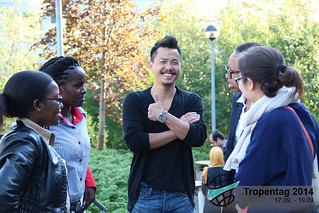

Beyond the Conference: Research for Real Impact
Thu, 09/25/2014 - 08:27 — Pin Pravalprukskul
Participants of Tropentag 2014, I hope you feel accomplished. With the wealth of excellent and groundbreaking work presented this year, it looks like we’re indeed one step forward in “bridging the gap between increasing knowledge and decreasing resources”. As we settle back in our home universities and institutes to catch up on work and resume our routines, it’s also perhaps a good time to reflect on what happens next. Conferences are great, but why end at the conference?
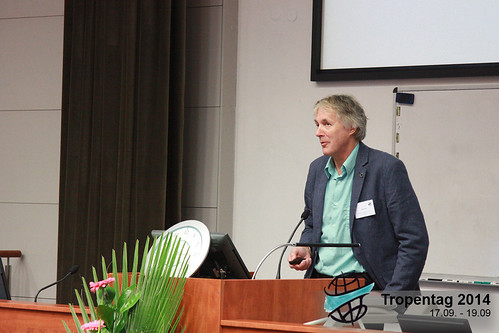

Challenging the Old Gray Horses: Interview with Louwrens Hoffman, Part II
Wed, 09/24/2014 - 00:36 — Rachel Friedman
For more, you can also access the blog post and part I of the video.
Outside the Box: Animal Agriculture Beyond the Feedlot
Wed, 09/24/2014 - 00:32 — Rachel Friedman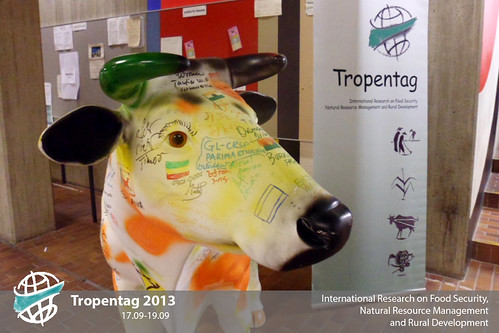 You might wonder why, as a long-time vegetarian, I am writing on a topic that so blatantly opposes my own dietary inclinations. Yet, the topic of the keynote address given by Louwrens Hoffman at Tropentag’s closing plenary is exactly why I must. Though many choose vegetarianism in response to animal welfare issues or because they “love” animals too much to eat them, consuming few or no animal products is a growing response to an unsustainable system of meat production. The livestock sector accounts for 18% of global greenhouse gas emissions, and contributes to soil erosion and freshwater pollution. At the same time, over a quarter of the Earth’s land surface is not suitable for growing crops, yet could support livestock.
(Continue...)
You might wonder why, as a long-time vegetarian, I am writing on a topic that so blatantly opposes my own dietary inclinations. Yet, the topic of the keynote address given by Louwrens Hoffman at Tropentag’s closing plenary is exactly why I must. Though many choose vegetarianism in response to animal welfare issues or because they “love” animals too much to eat them, consuming few or no animal products is a growing response to an unsustainable system of meat production. The livestock sector accounts for 18% of global greenhouse gas emissions, and contributes to soil erosion and freshwater pollution. At the same time, over a quarter of the Earth’s land surface is not suitable for growing crops, yet could support livestock.
(Continue...)
Building Blocks: Learning from Gender Studies to Close Gaps
Tue, 09/23/2014 - 21:34 — Rachel Friedman
“Gender” has become quite a buzzword in development circles these days. This is increasingly evident with prominent publications by the UN Food and Agriculture Organization and the emergence of the new UN Women. Though at the moment this topic may be en vogue, the long-time neglected issues related to gender are important blocks missing in the bridge from agricultural research to practice. It was therefore encouraging to see several posters at this year’s Tropentag conference conveying the multi-faceted nature of gender-sensitive approaches and issues.
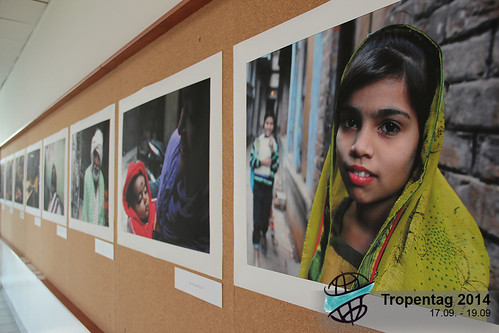 (Continue...)
(Continue...)
 (Continue...)
(Continue...)
“Saving food saves resources”— Tanja Pickardt
Mon, 09/22/2014 - 21:01 — Pramila Thapa
‘In general, one-third of the food produced is lost’ said Tanja Pickardt during a presentation at Tropentag. According to FAO, loss varies with type of the food produced. For example, the loss in grain is less as compared to fruits, vegetables, and dairy products. Pickardt said that it is necessary to quantify the food loss before making policy decisions, but it is very difficult to quantify the actual quantity of food wasted. To illustrate this point, she showed a video by FAO titled "Food Wastage Footprint 2". The environmental and social consequences are more difficult to quantify than economic losses. Also in this video, we can see different ways to reduce food loss and alternative uses of wasted food.
 (Continue...)
(Continue...)
 (Continue...)
(Continue...)
“Camel to human”— Anne Liljander on Nutritional Security or death?
Mon, 09/22/2014 - 14:10 — Pramila Thapa
Animal with robust health that can survive in harsh environmental conditions, camel is a good opportunity for nutritional security in South Saharan Africa, SSA. The milk and meat from camel is really good for the human health said Anne Liljander in her presentation tin Tropentag 2014, Prague. But who knows if the same camel carries the deadly virus?
With the outbreak of a deadly disease in Saudi Arabia in 2012, Middle East Respiratory Syndrome (MERS) caught an attention of researchers. Out of 250 human infections, 93 cases were reported fatal. Most of the people with this viral infection confirmed with this virus had serious respiratory illness. Anne and her team conducted research to find out the source of the virus. Finally, the viral strain was found in humped dromedary came that were imported from African Peninsula.
Getting back to the SSA, in Kenya, they found that 29% of camels were MERS positive. In the sample from 1992 (Kenya) and from 1983 (Somalia and Sudan), the camels had antibodies to MERS-Cov. It is always interesting to know if zoonotic diseases are fatal. Who knows if another “Evola-like” disease is too near to be pandemic? All the best for success on sustainable solution for the research team!
Were there unmet expectations?
Fri, 09/19/2014 - 19:53 — Ruffy Rodrigo
While sitting at parallel sessions on natural resource management, I find it really interesting to watch people come and go. I have observed people leave after one presentation and another group of people come in. I can’t help but wonder why? Were there any expectation that the presentations didn’t meet? Were the presenters boring?
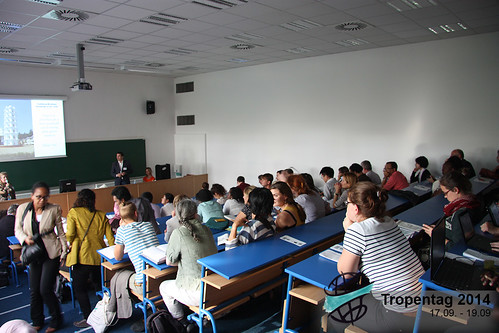 (Continue...)
(Continue...)
 (Continue...)
(Continue...)




